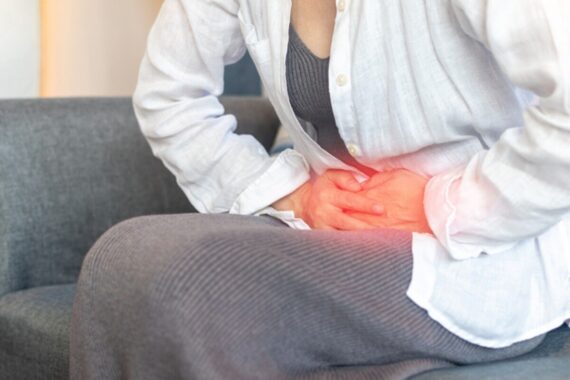
Consultant gynaecologist Arvind Vashisht summarises his conference presentation on endometriosis, in the latest in our series on Pulse LIVE talks
Endometriosis is a common debilitating condition, usually affecting women of reproductive age.
It is defined by the presence of tissue similar to that lining the uterus, but found in places outside of the womb.
Symptom profile
It typically presents with painful menstrual periods and pain on sexual intercourse, but other presenting symptoms include generalised pelvic pain, pain on bowel opening, infertility, as well as other gastrointestinal and lower urinary tract symptoms. Due to the myriad of associated symptoms and overlap with other conditions, patients may be passed between different specialists, potentially delaying diagnosis and effective treatment.
There are many different theories as to the source and development of endometriosis. The most popular is that it is a product of so-called ‘retrograde menstruation’, although this theory does not account for the varied anatomical sites where endometriosis tissue is encountered. Most commonly, nodules are seen in the pelvis, although in around 10% of people with endometriosis, they are found further afield. Sites where nodules have been found outside the pelvis include surgical sites, the umbilicus, the diaphragm and pleura. There is growing awareness of thoracic endometriosis.
The symptoms may not map entirely to the presence of the endometriosis tissue. What seems clear, however, is that the disease, chiefly in response to hormonal stimulation, causes local inflammatory effects that may ultimately be processed as pain and may cause organ dysfunction.
The All Party Parliamentary Group published a report on endometriosis in 2020, based on the experience of over 10,000 women. The report demonstrated that women frequently wait for a very long time (a reported average of eight years) before getting an established diagnosis of endometriosis. It highlights the ensuing impact on mental health, ability to function and deleterious effects on schooling, employment and relationships.
Campaigners hope that heightened awareness of the condition will lead to faster diagnosis and treatment. Healthcare professionals faced with a patient presenting with such symptoms should consider the possibility of endometriosis.
Investigation
Imaging by means of a pelvic ultrasound (as recommended by NICE) or MRI can be very helpful in identifying a diagnosis. If there is a suspicion of endometriosis on the basis of symptoms, initial treatments can be started, although achieving a diagnosis with imaging is important in helping plan a treatment strategy, guiding the need for referral, and alerting to other pelvic pathology that may be involved including ovarian pathology, adenomyosis and fibroids. It is worth remembering that imaging is operator dependent and a negative test does not exclude the presence of the disease. There are studies looking at the role of biomarkers and other non-invasive tests to improve the diagnosis of endometriosis, but as yet sensitivity of such tests are generally poor.
Laparoscopy may be necessary to diagnose the disease and remains for many the gold standard diagnostic tool.
Treatment
Treatment options include lifestyle modifications, analgesics, hormonal modification and surgery. Treatment choice will depend on the severity of symptoms as well as the patient’s preferences and prior experience of treatment. In 2017, NICE published useful practice guidelines for managing women with suspected endometriosis1. These serve as a useful framework for treatment.
Step-wise treatment involves analgesics, hormones and neuropathic agents. Many women find lifestyle interventions including dietary changes, exercises and psychological / behavioural modification strategies to be helpful in controlling flare ups of symptoms. Pain medicines are commonly used including simple analgesics such as non-steroidal anti-inflammatories, neuropathic agents and onward referral to pain medicine specialists.
The mainstay of medical treatment is to reduce cyclical stimulation to endometriotic lesions. Dependent on patient choice and medical history, the combined oral contraceptive pill, progesterone-only pill, or progesterone-releasing intrauterine systems can be prescribed. In a small selected cohort of women who have not been helped by other treatments and who have a confirmed diagnosis, GnRH analogue injections are used but these are rarely for long-term (unlicensed for this use long-term), They may be given in conjunction with ‘add-back’ HRT to mitigate menopausal side effects and bone density loss, and are sometimes used prior to surgery to control advanced disease.
Surgery can be very effective for the treatment of endometriosis. The usual process involves keyhole surgery (laparoscopy) to diagnose and excise the disease. Accurate preoperative imaging can help with surgical planning as well as patient counselling.
If treatment is unsuccessful, or if severe disease is suspected involving the bowel, urinary tract or extra pelvic areas, or if there are fertility considerations, then prompt referral either by the primary care physician or in some cases, by less specialised gynaecology services, to specialist centres is advised.
Dedicated endometriosis centres work with teams of specialists including gynaecologists, colorectal surgeons, urologists, radiologists, pain, medicine specialists, and nurse specialists. These teams are geared towards providing a continuum of patient-centred care.
The key message is that all of us as healthcare practitioners should consider the possibility of endometriosis as a diagnosis for patients presenting with pelvic pain. Symptom diaries can sometimes provide a clue to the cyclical nature of symptoms, but the diagnosis should also be considered in those with chronic pelvic pain.
TIPS:
- Cardinal symptoms are painful periods, and pain on sex
- Look for cyclicity of any other pain type symptoms affecting the bowel and bladder
- Consider the use of symptom diaries
- Think endometriosis in a women presenting with multiple episodes of pain
- Consider organising an ultrasound in a specialist scanning unit
- A negative pelvic ultrasound (or MRI) scan does not exclude disease
- Use a stepwise approach to treatment, using analgesia and hormonal support dependent on patient factors
- If symptoms persist, or if there are fertility concerns or if the patient is keen for a diagnosis then refer to a gynaecology service with an interest in endometriosis.
- If severe disease is suspected or diagnosed involving the bladder or bowel, then referral to specialist endometriosis centre is advised
Arvind Vashisht is a consultant gynaecologist at University College Hospital London

Pulse 365 LIVE Events cover a broad array of topics pertinent to you, your patients, and your practice. You will gain free CPD and be able to take part in live Q&As. Specifically created for all practising, GMC-registered GPs and trainees, you will hear from experts across primary and secondary care, and network with like-minded GPs. Sign up for your nearest event today.
Pulse October survey
Take our July 2025 survey to potentially win £1.000 worth of tokens













It may be difficult to access pelvic USS just fpr pelvic pain, as it appears to be below criteria needed for USS referrals
very good review very difficult to diagnose disease